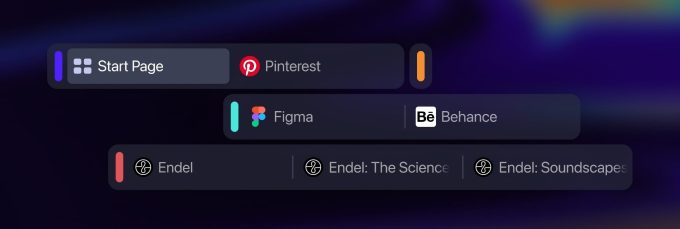Opera has launched a new browser called Opera One, which will eventually replace its flagship browser. The Norway-based company said that this new browser has elements that will make it ready for a “generative AI-based future” without specifying what it means.
The core feature for Opera One, which is being launched as a developer preview, is a new tab grouping concept called “Tab Islands.” It automatically groups tabs based on context. For instance, if you are looking for dinner places, tabs with different menus and locations will be clubbed together. If you are working on a bunch of Google docs, they will be grouped together as well.

Tab Island representation Image Credits: TechCrunch
Each island (or group) is represented by a vertical colored pill, which you can expand and collapse with a click. There is a handy tooltip feature for collapsed islands, which can help you find the correct tab group.
Joanna Czajka, product director at Opera said that this new approach is “a natural way of arranging your tabs into contextual groups without disturbing your flow.”
However, Opera is not the only browser maker trying to approach tabs in a new way. Startups like the Browser Company and SigmaOS have focused on creating different workspaces and opening/finding tabs through a taskbar.
The company added that Opera One uses Multithreaded Compositor, which helps in rendering different complex web animations smoothly through the GPU. Czajka said that this helps in better performance with tab island and other upcoming features like a redesigned address bar.
In terms of AI-centric features for the new browser, Opera didn’t give many details. But specified that ChatGPT and ChatSonic integrations it introduced to the flagship browser in March will be turned on by default.
Opera said that this is the first iteration of Opera One, and later this year it will replace the company’s flagship product on Windows, MacOS, and Linux later this year.
Opera launches Opera One browser with a new tab grouping concept by Ivan Mehta originally published on TechCrunch







